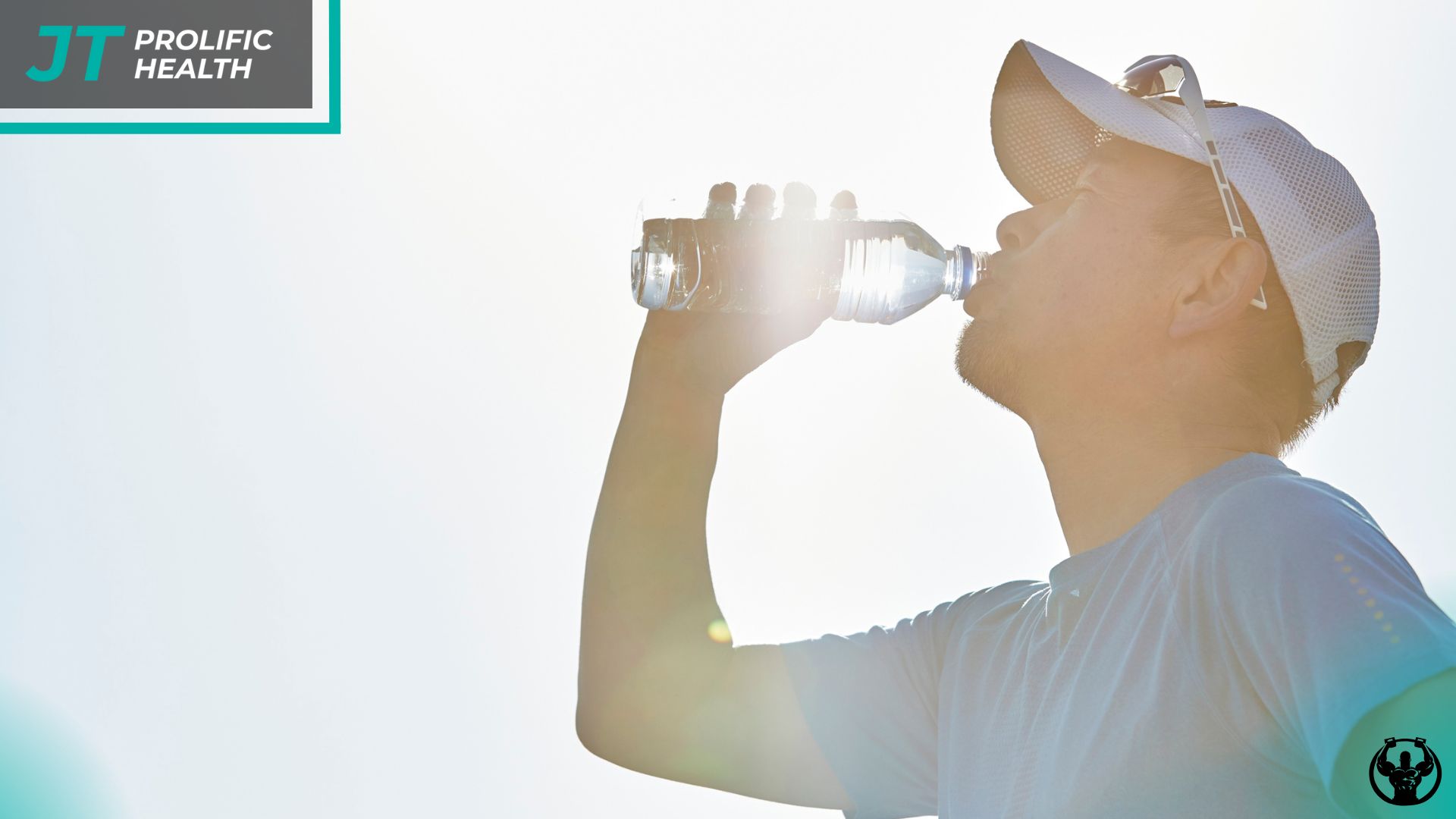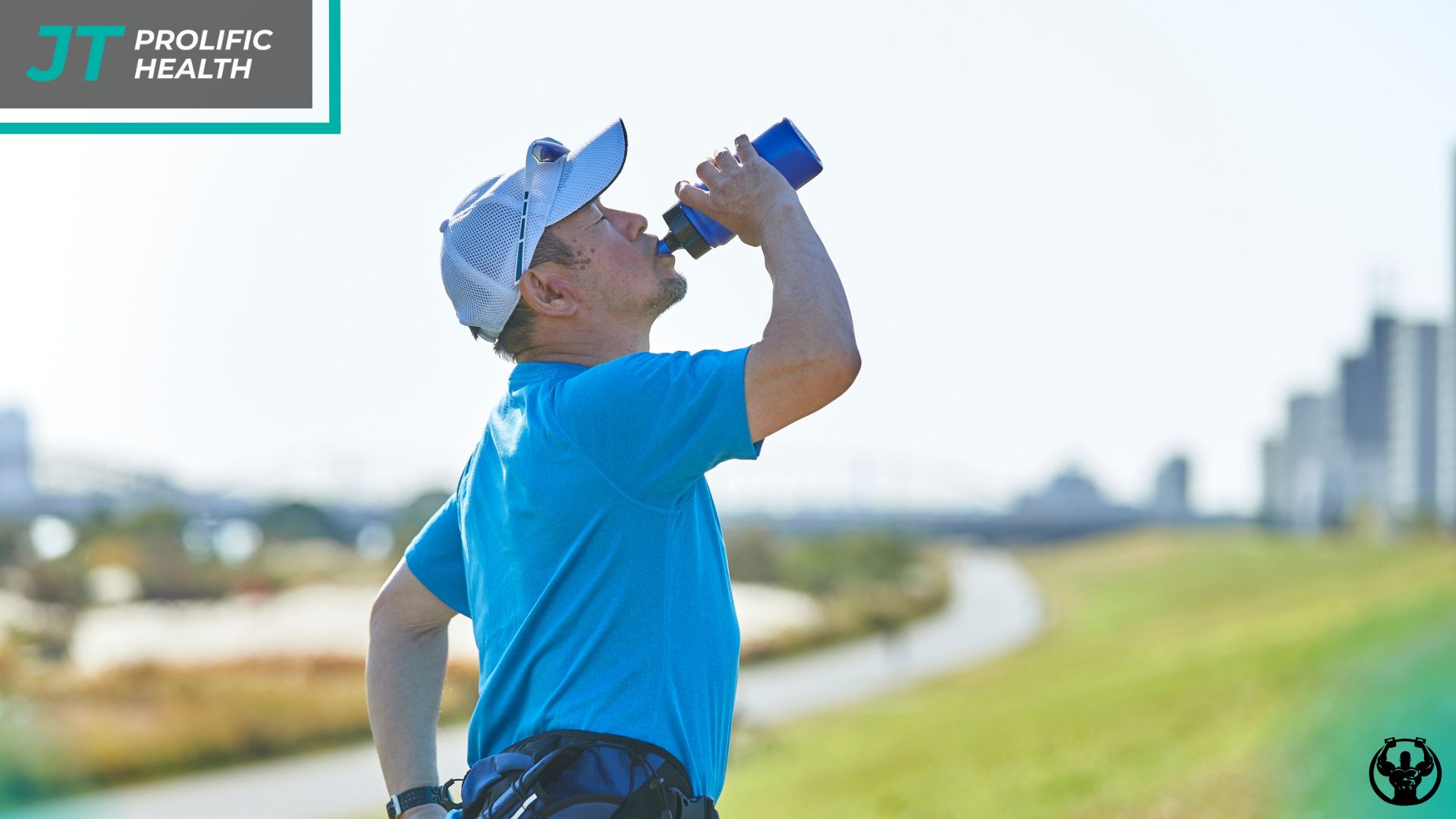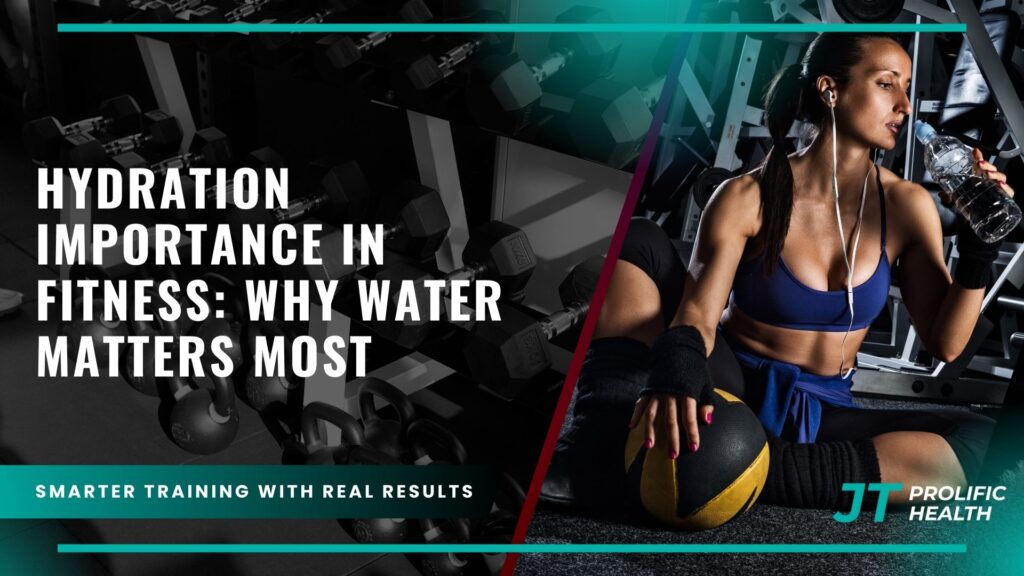IMAGE PROMPT (FEATURED): A fitness enthusiast drinking water from a clear bottle in a modern gym setting, with natural lighting streaming through windows, showing droplets of sweat and determination on their face, surrounded by exercise equipment in soft focus, captured in landscape orientation with vibrant but natural colors
Water is the foundation of life, yet its critical role in fitness performance is often underestimated by both casual exercisers and dedicated athletes. While many people focus intensely on workout routines, nutrition plans, and supplement regimens, they frequently overlook one of the most fundamental elements that can make or break their fitness journey: proper hydration. The hydration importance in fitness extends far beyond simply quenching thirst after a workout—it’s a complex physiological process that affects every aspect of physical performance, recovery, and long-term health outcomes.
When we consider the human body’s composition, water accounts for approximately 60% of our total body weight, with muscles containing about 75% water. This isn’t just a coincidence; it’s a testament to how integral proper hydration is to our body’s ability to function optimally. During exercise, our bodies undergo numerous physiological changes that place increased demands on our hydration status. Heart rate elevates, blood flow redirects to working muscles, and our internal temperature rises as we generate heat through muscular contractions.
The consequences of inadequate hydration during fitness activities can be both immediate and long-lasting. Even mild dehydration—as little as 2% of body weight loss through fluid—can significantly impair physical performance, reduce endurance capacity, and increase the perceived effort required to complete the same workout intensity. This seemingly small deficit can transform an effective training session into a struggle, limiting the adaptations and improvements that exercise is meant to provide.
Understanding hydration importance becomes even more critical when we examine how dehydration affects different bodily systems during exercise. The cardiovascular system must work harder to maintain blood pressure and circulation when fluid levels are inadequate. The thermoregulatory system becomes less efficient at cooling the body through sweat production. The muscular system experiences reduced power output and increased fatigue. Even cognitive function can decline, affecting coordination, decision-making, and the ability to maintain proper exercise form.
For fitness enthusiasts working with professional guidance, recognizing these hydration challenges becomes part of a comprehensive approach to health and performance optimization. The relationship between proper hydration and exercise effectiveness is so significant that it can determine whether someone achieves their fitness goals or plateaus despite consistent effort.
Key Takeaways
- Performance Impact: Even mild dehydration of 2% body weight can reduce exercise performance by 10-15%, affecting strength, endurance, and coordination during workouts.
- Temperature Regulation: Proper hydration is essential for effective sweating and thermoregulation, preventing dangerous overheating during intense physical activity.
- Recovery Enhancement: Adequate fluid intake accelerates post-workout recovery by facilitating nutrient transport, waste removal, and muscle repair processes.
- Cardiovascular Support: Maintaining hydration helps preserve blood volume, reducing cardiovascular strain and maintaining optimal heart rate responses during exercise.
- Injury Prevention: Well-hydrated muscles and joints function more efficiently, reducing the risk of cramps, strains, and other exercise-related injuries.
- Cognitive Function: Proper hydration maintains mental clarity and focus, crucial for maintaining proper form and making safe exercise decisions.
- Metabolic Efficiency: Hydration supports optimal metabolic function, including fat oxidation and energy production pathways that fuel exercise performance.
- Individual Variability: Hydration needs vary significantly based on body size, sweat rate, exercise intensity, environmental conditions, and individual physiology, requiring personalized approaches.
The Science Behind Hydration and Exercise Performance

The physiological relationship between hydration and exercise performance operates through multiple interconnected systems that work together to maintain homeostasis during physical stress. When we exercise, our bodies initiate a complex cascade of responses designed to meet the increased metabolic demands while maintaining core temperature within safe limits. Water serves as the medium through which virtually all of these processes occur, making adequate hydration absolutely essential for optimal function.
At the cellular level, proper hydration maintains the integrity of cell membranes and facilitates the transport of nutrients, oxygen, and waste products. During exercise, muscle cells require rapid delivery of glucose and oxygen while simultaneously removing metabolic byproducts like lactate and carbon dioxide. This exchange occurs through the bloodstream, which is approximately 90% water. When hydration levels drop, blood volume decreases, making it more difficult for the cardiovascular system to maintain adequate circulation to working muscles.
The thermoregulatory system represents another critical area where hydration importance becomes evident. As exercise intensity increases, muscle contractions generate heat that must be dissipated to prevent dangerous elevations in core body temperature. The primary mechanism for heat removal during exercise is evaporative cooling through sweat production. However, sweat is composed primarily of water and electrolytes drawn from blood plasma. Without adequate fluid replacement, the body’s ability to produce sweat becomes compromised, leading to rapid increases in core temperature that can impair performance and pose serious health risks.
Research has consistently demonstrated that dehydration affects exercise performance in predictable ways. Studies show that for every 1% of body weight lost through dehydration, there’s approximately a 5% reduction in exercise capacity. This relationship becomes even more pronounced in hot environments, where the combination of increased sweat rates and elevated ambient temperatures places additional stress on the body’s fluid balance systems.
IMAGE PROMPT: A detailed cross-section illustration showing muscle fibers and blood vessels during exercise, with water molecules flowing through the circulatory system, depicted in educational style with soft lighting and anatomical accuracy, showing the microscopic level of hydration’s impact on performance
Hydration’s Role in Strength Training and Muscle Function


Strength training places unique demands on the body’s hydration systems that differ significantly from endurance activities. While cardiovascular exercise primarily challenges the body’s ability to deliver oxygen and remove heat, resistance training creates intense, localized stress on muscle fibers that requires optimal hydration for maximum force production and recovery. Understanding how hydration importance applies specifically to strength training can help individuals maximize their training outcomes and minimize injury risk.
During resistance exercise, muscle contractions rely heavily on the phosphocreatine system and glycolysis for energy production. Both of these metabolic pathways require adequate cellular hydration to function efficiently. When muscle cells are properly hydrated, they maintain optimal volume and internal pressure, which enhances the mechanical properties necessary for force generation. Dehydrated muscle cells lose some of their structural integrity, leading to reduced power output and increased susceptibility to damage during high-intensity contractions.
The relationship between hydration and strength becomes particularly evident when examining the role of cell swelling in muscle protein synthesis. Research has shown that well-hydrated muscle cells experience beneficial swelling that triggers anabolic signaling pathways, promoting muscle growth and adaptation. This process, known as cell volumization, is one of the mechanisms through which proper hydration supports long-term strength gains and muscle development.
For individuals engaged in comprehensive strength training programs, maintaining optimal hydration becomes even more critical due to the progressive nature of resistance training. As training loads increase over time, the body’s ability to recover between sessions depends heavily on adequate fluid intake to support protein synthesis, glycogen replenishment, and the removal of metabolic waste products that accumulate during intense training.
The timing of hydration around strength training sessions also plays a crucial role in performance optimization. Pre-workout hydration ensures that muscle cells begin exercise in an optimal state, while intra-workout fluid replacement helps maintain performance throughout longer training sessions. Post-workout hydration accelerates recovery by facilitating the transport of nutrients to damaged muscle tissue and supporting the inflammatory processes that drive adaptation.
IMAGE PROMPT: A muscular athlete performing a deadlift in a professional gym setting, with visible perspiration and a water bottle nearby, captured with dramatic lighting that emphasizes muscle definition and the intensity of strength training, showing the connection between hydration and performance
Environmental Factors and Hydration Challenges


Environmental conditions significantly influence hydration requirements and can dramatically alter the body’s fluid balance during exercise. Temperature, humidity, altitude, and air circulation all affect sweat rates and the body’s ability to maintain optimal hydration status. Understanding these environmental factors is crucial for anyone serious about maintaining peak performance across different training conditions and seasons.
Hot and humid environments present the greatest challenge to maintaining proper hydration during exercise. High ambient temperatures increase the body’s reliance on evaporative cooling, while high humidity reduces the efficiency of sweat evaporation. This combination can lead to sweat rates exceeding 2-3 liters per hour in some individuals, making it nearly impossible to replace fluids at the rate they’re being lost. The hydration importance becomes magnified in these conditions, as the margin for error becomes much smaller.
Cold environments present their own unique hydration challenges that are often overlooked. While sweat rates may be lower in cold conditions, the body still loses significant amounts of water through respiratory evaporation, especially during intense exercise when breathing rate increases substantially. Additionally, cold-induced diuresis can increase urine production, further contributing to fluid losses. Many people also experience reduced thirst sensation in cold environments, leading to voluntary dehydration.
Altitude adds another layer of complexity to hydration management. At elevations above 8,000 feet, the combination of lower air pressure, reduced humidity, and increased respiratory rate can accelerate fluid losses. The body’s initial response to altitude includes increased urine production as it adapts to the lower oxygen environment. These factors combine to increase daily fluid requirements by 1.5-2 liters compared to sea level needs.
For those following outdoor training programs or participating in seasonal sports, developing strategies to address environmental hydration challenges becomes essential. This might include pre-cooling techniques for hot weather training, modified fluid replacement strategies for different climates, and enhanced monitoring of hydration status when environmental conditions change.
Hydration Strategies for Different Types of Exercise
Different forms of exercise place varying demands on the body’s hydration systems, requiring tailored approaches to fluid replacement and management. While the fundamental importance of hydration remains constant across all activities, the specific strategies for maintaining optimal fluid balance must be adapted to match the unique physiological challenges presented by different exercise modalities.
Endurance activities such as running, cycling, and swimming typically involve sustained periods of moderate to high-intensity exercise that can last anywhere from 30 minutes to several hours. These activities are characterized by steady-state energy demands and continuous heat production, leading to relatively predictable sweat rates and fluid losses. The primary hydration challenge in endurance exercise is replacing fluids at a rate that closely matches losses while avoiding gastrointestinal distress that can occur with excessive fluid intake.
High-intensity interval training (HIIT) presents a different set of hydration challenges due to the alternating periods of intense effort and recovery. During high-intensity intervals, the body’s demand for cooling increases rapidly, leading to sudden spikes in sweat production. However, the intermittent nature of HIIT can make it difficult to maintain consistent fluid intake throughout the workout. The hydration importance in HIIT extends beyond just replacing lost fluids; it also involves maintaining the rapid physiological transitions between work and recovery phases.
Team sports and recreational activities often combine elements of both endurance and high-intensity exercise while adding the complexity of unpredictable duration and intensity patterns. Sports like basketball, soccer, and tennis require athletes to maintain hydration over extended periods while dealing with varying levels of exertion and limited opportunities for fluid replacement. These activities also often involve outdoor environments where heat stress can compound hydration challenges.
When working with qualified fitness professionals, individuals can develop personalized hydration strategies that account for their specific exercise preferences, sweat rates, and environmental conditions. This individualized approach ensures that hydration practices support rather than hinder performance goals while maintaining safety across all types of physical activity.
Recognizing and Preventing Dehydration
The ability to recognize early signs of dehydration and implement preventive strategies is crucial for maintaining optimal exercise performance and safety. Dehydration exists on a continuum, from mild fluid deficits that may barely be noticeable to severe dehydration that can pose serious health risks. Understanding this progression and developing awareness of personal hydration status can help individuals maintain peak performance while avoiding the negative consequences of inadequate fluid intake.
Early signs of dehydration often manifest subtly and can be easily overlooked, especially during the excitement and focus of intense exercise. Increased thirst is often considered the first indicator, but by the time thirst becomes noticeable, the body may already be experiencing a 1-2% fluid deficit. Other early warning signs include slight decreases in urine output, darker urine color, mild fatigue, and reduced exercise tolerance. These symptoms may be attributed to normal exercise stress, making it important to maintain awareness of hydration status through objective measures.
As dehydration progresses, symptoms become more pronounced and can significantly impact both performance and safety. Moderate dehydration, representing a 3-5% loss of body weight, typically includes symptoms such as pronounced thirst, dry mouth, reduced urine output, headache, dizziness, and notable decreases in exercise capacity. At this level, the hydration importance becomes undeniable as performance deficits become clearly apparent and the risk of heat-related illness increases substantially.
Severe dehydration, representing losses greater than 5% of body weight, constitutes a medical emergency that requires immediate intervention. Symptoms may include confusion, rapid heartbeat, low blood pressure, absence of sweating despite heat stress, and potential loss of consciousness. This level of dehydration can occur surprisingly quickly under certain conditions, particularly in hot environments or during prolonged exercise without adequate fluid replacement.
Prevention strategies focus on maintaining consistent hydration habits rather than trying to correct deficits after they occur. This includes establishing regular fluid intake patterns throughout the day, monitoring urine color and frequency as indicators of hydration status, and adjusting intake based on exercise plans and environmental conditions. For those following structured training programs, integrating hydration monitoring into regular fitness assessments can help identify patterns and optimize individual strategies.
Frequently Asked Questions
How much water should I drink before, during, and after exercise?
Pre-exercise hydration should begin several hours before activity, with 16-20 ounces consumed 2-3 hours prior and an additional 8 ounces 15-20 minutes before starting. During exercise, aim for 6-8 ounces every 15-20 minutes, adjusting based on sweat rate and environmental conditions. Post-exercise, drink 150% of the fluid lost through sweat to account for ongoing losses and promote complete rehydration.
Can I drink too much water during exercise?
Yes, excessive water intake can lead to hyponatremia, a dangerous condition where blood sodium levels become diluted. This is more common during prolonged exercise lasting over 4 hours. The key is matching fluid intake to losses and including electrolyte replacement during extended activities.
Are sports drinks better than water for hydration?
For exercise lasting less than 60 minutes, water is typically sufficient. Sports drinks become beneficial during longer activities as they provide carbohydrates for energy and electrolytes to replace those lost in sweat. The choice depends on exercise duration, intensity, and individual sweat composition.
How can I tell if I’m properly hydrated?
Monitor urine color as a simple indicator—pale yellow suggests good hydration while dark yellow indicates dehydration. Other signs include consistent energy levels, normal thirst, and maintaining body weight before and after exercise sessions.
Does caffeine affect hydration during exercise?
While caffeine has mild diuretic effects, research shows that regular caffeine users can include caffeinated beverages as part of their hydration strategy. However, water remains the optimal choice for pure hydration needs during exercise.
What about hydration needs in air-conditioned gyms?
Air conditioning can create a deceptively dry environment that increases respiratory water losses while potentially masking sweat production. Maintain regular fluid intake even when you don’t feel hot or notice obvious sweating.
How does age affect hydration needs during exercise?
Older adults may have reduced thirst sensation and kidney function changes that affect fluid regulation. They should pay extra attention to scheduled fluid intake rather than relying solely on thirst cues, and may need longer rehydration periods after exercise.
Should I weigh myself before and after workouts to monitor hydration?
Yes, this is an excellent strategy for understanding individual fluid losses. Each pound lost represents approximately 16 ounces of fluid that should be replaced. This method helps establish personal hydration needs for different types of exercise and environmental conditions.
Conclusion
The hydration importance in fitness cannot be overstated—it serves as the foundation upon which all other aspects of exercise performance are built. From the cellular processes that generate energy for muscle contractions to the complex thermoregulatory mechanisms that prevent overheating, water plays an indispensable role in every aspect of physical activity. Understanding this fundamental relationship empowers individuals to optimize their training outcomes while maintaining safety across all types of exercise.
As we’ve explored throughout this comprehensive examination, proper hydration affects far more than just thirst satisfaction. It influences strength and power output, endurance capacity, recovery speed, injury risk, and even cognitive function during exercise. The margin between optimal performance and subpar results often comes down to seemingly small details like maintaining adequate fluid balance throughout training sessions.
At Prolific Health, we recognize that successful fitness journeys require attention to all aspects of health and performance, with hydration being a cornerstone of this comprehensive approach. Our expert trainers work with clients to develop personalized strategies that address individual hydration needs while supporting broader fitness goals. Whether someone is beginning their fitness journey or seeking to optimize advanced training protocols, proper hydration remains a non-negotiable element of success.
Moving forward, the key to harnessing the full benefits of proper hydration lies in developing consistent habits rather than relying on reactive measures. This means establishing regular fluid intake patterns, monitoring hydration status through objective measures, and adjusting strategies based on changing exercise demands and environmental conditions. By treating hydration with the same importance as workout programming and nutrition planning, individuals can unlock their full potential and achieve lasting success in their fitness endeavors.




